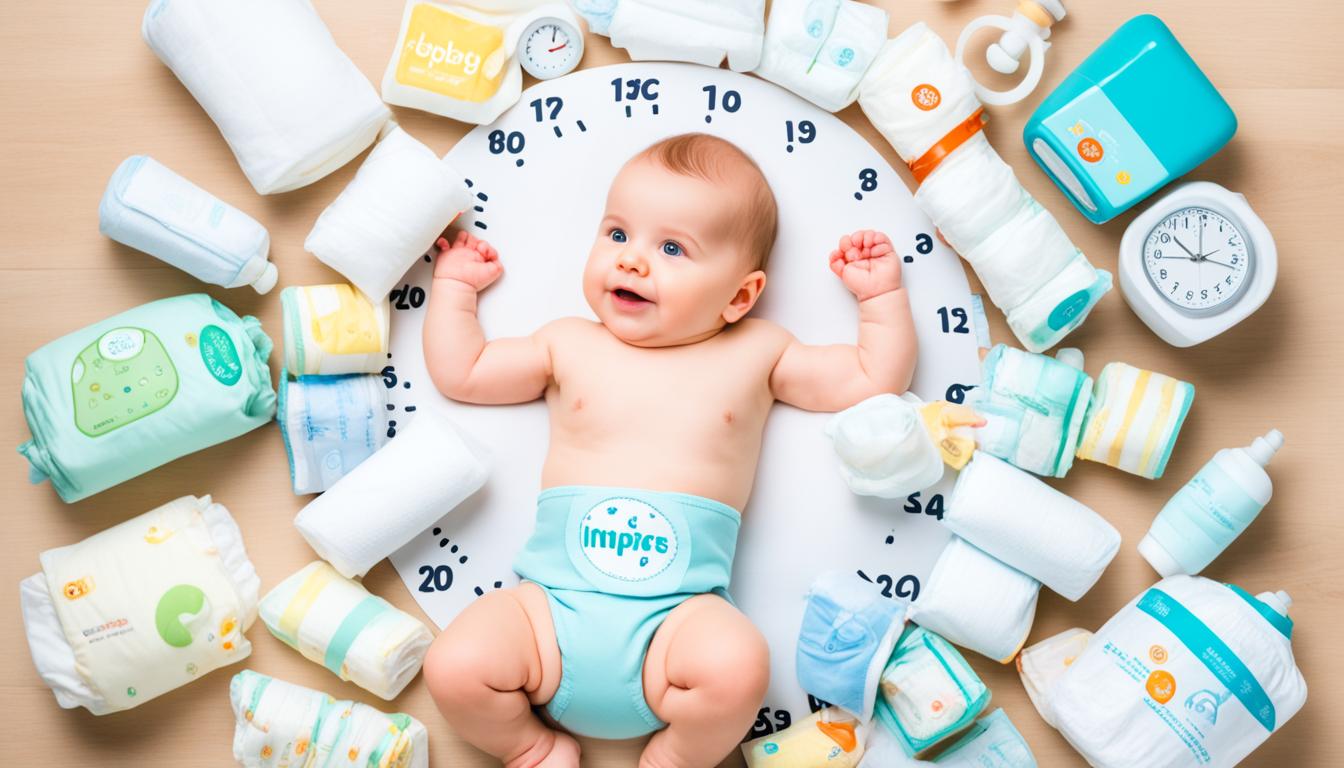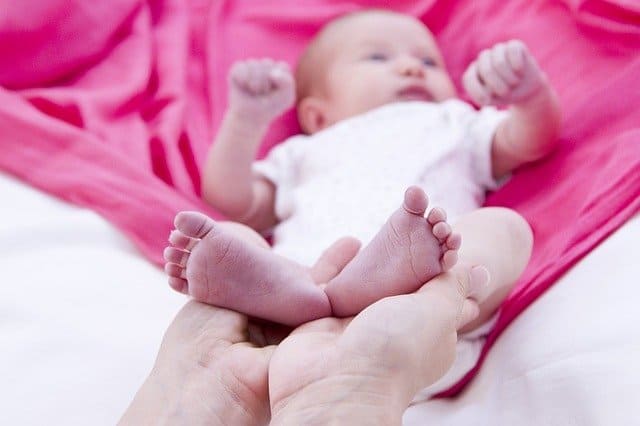Baby Kicking Legs And Flailing Arms No Crying
All babies cry, but some cry more than others. If you notice your baby kicking legs, flailing arms, and not crying, it may be a normal part of their development. In this section, we will explore the reasons behind these movements and what they mean for your little one’s well-being.
Skip To The Following Sections
- Baby Reflexes – Instinctive Baby Movements
- Decoding Baby Body Language
- Signs of Discomfort
- Startle Reflex and Sleep
- Comforting Techniques
- Safe Swaddling Guidelines
- Importance of Nutritional Intake
- Consulting a Healthcare Provider
- Preventing Abusive Head Trauma
- Conclusion
- FAQ
- What is colic in babies?
- Is there a treatment for colic?
- Why do babies kick their legs and flail their arms?
- What can baby leg and arm coordination indicate?
- Why do babies flail their arms and legs when they are uncomfortable?
- Why do babies startle and flail their arms while sleeping?
- How can swaddling help calm a baby while sleeping?
- What are safe swaddling guidelines?
- How important is proper nutrition for a baby’s growth and development?
- When should I consult a healthcare provider for my baby?
- How can I prevent abusive head trauma or shaken baby syndrome?
- How can I understand and respond to my baby’s needs through their body language?
- Source Links
Key Takeaways:
- Colic is when a healthy baby cries for excessive periods, typically lasting for more than 3 hours each day for 3 or more days in one week.
- Babies have instinctive reflexes, such as the Moro reflex, which can cause sudden arm and leg movements when startled.
- Understanding a baby’s body language, including kicking legs and flailing arms, can help parents decode their needs and emotions.
- Discomfort, such as gas pain or an immature digestive system, can lead to leg and arm movements in babies.
- Swaddling and other soothing techniques can provide comfort, promote better sleep, and reduce arm and leg flailing.
Baby Reflexes – Instinctive Baby Movements
When it comes to newborns, their tiny bodies are equipped with incredible instinctive reflexes. These reflexes, including sucking, rooting, and grasping, are essential for their survival and development.
One prominent reflex is known as the Moro reflex, or startle reflex. This reflex can cause babies to jerk suddenly and flail their arms and legs, often accompanied by cries of surprise or discomfort. It is a natural response to unexpected stimuli and serves as a protective mechanism.
This instinctive reaction is typically checked by doctors shortly after birth as part of a routine examination to ensure the baby’s health and neurological development. It allows healthcare professionals to assess the baby’s motor skills and ensure that their reflexes are functioning as expected.
Understanding these reflexes and movements can provide parents with valuable insights into their baby’s early development. It is important to remember that these reflexes are beyond the baby’s control and are an integral part of their growth journey.
Decoding Baby Body Language
Babies have their own unique way of communicating before they can talk. Through their body language, they express their needs and emotions. Understanding the meaning behind common baby movements can help you decipher what your baby is trying to tell you.
Baby Movements and Their Meanings
- Kicking Legs: When your baby kicks their legs, it can indicate excitement, happiness, or a desire for movement. It’s their way of showing their active nature and engaging with their environment.
- Flailing Arms: A baby’s flailing arms may indicate frustration or overstimulation. It can be their way of expressing a need for comfort or a signal that they’ve had enough sensory input.
- Moving Head: If your baby constantly moves their head from side to side, it could mean they are seeking a better view or exploring their surroundings. It’s their way of showing curiosity and interest.
- Clenching Fists: When a baby clenches their fists, it can be a sign of hunger, tiredness, or even a strong emotional response. It’s their reflexive way of expressing their needs.
- Thrashing Arms: Sometimes, babies may thrash their arms when they are tired or trying to self-soothe. It can also be a way for them to release tension or frustration.
While every baby has their individual body language, these movements can provide you with valuable insights into their emotions and needs. Paying attention to your baby’s cues and body language can help you respond more effectively as a parent.
Developmental Milestones and Movements
As your baby grows and reaches various developmental milestones, their motor skills, including leg and arm coordination, will improve. These milestones can influence their movements and body language.
For example, as they gain control over their limbs, you may notice more intentional movements and coordination between their legs and arms. This progression is a natural part of their development and allows them to explore and interact with the world around them.
Just as every milestone brings new movements and skills, it’s important to celebrate each small victory and support your baby’s growth and development along the way.
Signs of Discomfort

Babies are prone to experiencing discomfort, which can manifest in various ways. One common indication of discomfort is when a baby exhibits kicking legs and flailing arms. These movements can be attributed to several factors such as gas pain, stomach spasms, or an immature nervous or digestive system. It’s essential to address these issues promptly and provide the necessary comfort to alleviate the baby’s distress.
If your baby appears agitated or in pain, there are several techniques you can employ to help ease their discomfort. Winding the baby after a feed can help release any trapped gas that may be causing pain. It’s also important to avoid overfeeding, as this can contribute to digestive problems. Gentle massaging of the baby’s stomach can provide relief and promote healthy digestion.
Being attentive to your baby’s signs of discomfort and addressing them appropriately is crucial for their well-being and overall comfort. By understanding the underlying causes and employing comfort measures, you can help your baby navigate through any discomfort they may experience, promoting a calm and soothing environment.
Startle Reflex and Sleep
The startle reflex, also known as the Moro reflex, is a normal part of development in babies. It can cause arm jerks or flailing arms while sleeping. This reflex is present in all babies and can be triggered by bright lights or other stimuli in the environment.
It’s not uncommon for some babies to startle themselves awake during sleep due to this reflex. However, there are ways to help prevent the startle reflex and promote more peaceful sleep for your little one.
Swaddling
Swaddling, which involves wrapping your baby snugly in a blanket, can help inhibit the startle reflex and create a sense of security. By keeping your baby’s arms and legs securely wrapped, you can minimize the sudden arm jerks and help your baby stay asleep longer.
Creating a Calming Environment
It is important to create a soothing environment for your baby’s sleep. Avoid bright lights or stimulating noises that may trigger the startle reflex. Instead, try dimming the lights, playing soft and calming music, or using a white noise machine to create a peaceful atmosphere.
Swaddling can be a game-changer when it comes to helping your baby sleep better and reducing their startle reflex. It provides them with a sense of coziness and security, mimicking the comfort of the womb.”
– Dr. Emily Carter, Pediatrician
Remember, every baby is unique, and what works for one may not work for another. It’s essential to observe your baby’s response and adjust your approach accordingly. If you find that swaddling is not effective or your baby is still experiencing disrupted sleep due to the startle reflex, consider consulting your healthcare provider for personalized advice.
Comforting Techniques
When it comes to comforting your baby, swaddling can be a game-changer. By wrapping your little one snugly in a blanket, you provide them with a sense of security and comfort. Swaddling helps to reduce arm and leg flailing during sleep, allowing your baby to feel more settled and relaxed.
It’s also worth noting that some babies find comfort in sleeping with their legs in the air. This position mimics the fetal position, which can be soothing for them. So, if you notice your baby sleeping with their legs raised, it’s completely normal and nothing to worry about.
Another common movement in newborns is clenching their tiny fists. You might wonder why they do this. Well, clenched fists are actually a reflex in newborns and can indicate hunger or tiredness. So, if you see those tiny fists tightly closed, it might be a sign that your baby needs a feed or some rest.
To help calm your baby and promote better sleep, try incorporating soothing techniques like swaddling into your routine. The sense of security that comes with being snugly wrapped can help your little one feel more at ease, leading to a more peaceful slumber.
“Swaddling provides comfort and security to babies, reducing arm and leg flailing during sleep.”
Remember, every baby is different, so finding the right comforting technique may take some trial and error. But with a little patience and experimentation, you’ll discover what works best for your baby’s unique needs.
Safe Swaddling Guidelines
Swaddling is a proven technique that can help calm babies and promote better sleep. However, it is crucial to follow safe swaddling guidelines to ensure the well-being of your little one.
First and foremost, it is important to pay attention to the proper alignment of your baby’s hips. Avoid tightly wrapping the swaddle around the hips, as this can restrict movement and hinder proper hip development. Allow enough space for your baby’s legs to move naturally while keeping them snug and secure.
The swaddle should not restrict your baby’s ability to breathe comfortably. Ensure that the fabric is not too tight around the chest and that your baby’s face remains uncovered. This will help prevent any breathing difficulties or overheating.
When placing your baby down to sleep, always position them on their back. This sleeping position is recommended by doctors to reduce the risk of sudden infant death syndrome (SIDS).
It is also crucial to monitor your baby for any signs of overheating. Overheating can lead to discomfort and increase the risk of sudden infant death syndrome (SIDS). Make sure to dress your baby appropriately for the room temperature and avoid using heavy blankets or overdressing them.
As your baby grows and becomes more active, they may start showing signs of attempting to roll over. This is a natural developmental milestone. Once your baby demonstrates this readiness, it is important to stop swaddling to prevent any potential hazards.
Remember, safe swaddling ensures that your little one stays cozy, comfortable, and secure while promoting healthy hip development. By following these guidelines, you can provide the best possible care for your baby.
Importance of Nutritional Intake
Proper nutrition plays a vital role in supporting your baby’s growth and development. Providing the right nutrients is essential for their overall health and wellbeing. It is crucial to ensure that your baby receives adequate nutritional intake to support their rapid growth during the early stages of life.
Vitamins are an important component of a baby’s diet, as they contribute to bone development and immune system function. For example, vitamin D is crucial for strong bones and teeth, as well as supporting their immune system. While breast milk or formula can provide some essential nutrients, additional supplementation may be necessary to meet all of your baby’s nutritional needs.
Consider incorporating Wellbaby Multi-vitamin Drops into your baby’s daily routine to ensure they receive the necessary vitamins and minerals. These drops are specifically formulated to support your baby’s nutritional intake, promoting healthy growth and development.
Remember, every baby is unique, and their nutritional requirements may vary. It’s important to consult with your pediatrician or a healthcare professional to get personalized guidance on your baby’s specific nutritional needs. They can provide valuable insights and recommendations to help you make informed decisions regarding your baby’s diet.
Consulting a Healthcare Provider
If your baby exhibits symptoms that are concerning or persist for an extended period of time, it is important to consult a healthcare provider. Sometimes, it can be difficult to determine when to call the doctor for your baby, but being aware of the signs of illness in infants can help guide you.
Symptoms such as fever, poor weight gain, vomiting, and diarrhea should not be ignored and should be addressed by a doctor. These symptoms can indicate an underlying medical condition that may require immediate attention.
Additionally, if you notice any other concerning signs or have any doubts about your baby’s health or development, it is always recommended to seek medical advice. Pediatric healthcare professionals have the knowledge and expertise to assess your baby’s condition and provide appropriate care.
Remember, as a parent, your role is to advocate for your baby’s well-being. If you have any concerns or uncertainties about your baby’s health, reaching out to a healthcare provider is the best course of action.
“Having the guidance of a healthcare provider can offer reassurance and peace of mind when it comes to your baby’s health.”
Preventing Abusive Head Trauma
Abusive head trauma, also known as shaking baby syndrome, is a serious issue that must be prevented at all costs. Shaking a baby can result in severe brain damage and have long-lasting consequences. It is vital to prioritize the safety and well-being of your baby by taking necessary precautions.
If you find yourself feeling angry or frustrated, it is crucial to place the baby in a safe environment and take a break. Remember, it’s okay to ask for help and seek support from your partner, family members, or friends. Taking care of yourself is equally important to ensure you can provide a safe and loving environment for your baby.
Educating those who are in close contact with your baby, including family members, friends, and babysitters, about safe baby care practices is essential. By sharing knowledge about safe baby care practices, you are spreading awareness and contributing to the overall well-being of infants.
Remember, prevention is key when it comes to abusive head trauma. Taking proactive steps and educating those around you can make a significant difference in creating a safe and nurturing environment for your baby.
By implementing safe baby care practices and raising awareness, we can work together to prevent abusive head trauma and ensure the safety of our little ones.
Safe Baby Care Practices to Prevent Abusive Head Trauma:
- Always handle your baby gently and avoid any rough movements.
- Support your baby’s head and neck when carrying or holding them.
- Choose age-appropriate toys and avoid anything that may pose a choking hazard.
- Ensure the crib or bassinet meets safety standards and is free from hazards.
- Never shake or jerk your baby, even in frustration.
- Provide a calm and soothing environment for your baby.
- Seek assistance and support if you are feeling overwhelmed or stressed.
By adopting these safe baby care practices and promoting a nurturing environment, we can protect our babies from abusive head trauma and help them thrive.
Conclusion
Understanding and interpreting your baby’s body language is essential in providing the best care and meeting their needs. By paying attention to their movements and gestures, you can respond with comfort and address any discomfort your baby may be experiencing.
One effective technique for promoting better sleep is swaddling. Wrapping your baby snugly in a blanket can provide them with a sense of security and reduce arm and leg flailing during sleep. Remember to follow safe swaddling practices to ensure your baby’s safety. Proper hip alignment and allowing the baby to breathe freely are crucial considerations.
If you have any concerns about your baby’s health or development, it is always recommended to consult a healthcare provider. They can provide expert guidance and address any specific issues or questions you may have.
By following safe baby care practices, such as understanding baby body language, swaddling properly, and seeking professional advice when needed, you can create a nurturing environment for your baby and promote their overall well-being. Taking these steps will help you provide the best care for your little one, ensuring their healthy growth and development.
FAQ
What is colic in babies?
Colic is when a healthy baby cries for more than 3 hours each day for 3 or more days in one week. It can start at 2 to 3 weeks of age and lasts up to 3 or 4 months of age. The main signs of colic are crying, accompanied by flailing arms and legs, clenched fists, arching of the back, and drawing the legs up toward the belly.
Is there a treatment for colic?
There is no specific treatment for colic. However, there are steps you can take to provide comfort to your baby, such as avoiding smoking around them, burping them often while feeding, holding them in your arms, playing constant calming sounds, and taking them for a ride in a stroller or car. It is important to consult a doctor if your baby has additional symptoms like fever, poor weight gain, or throwing up.
Why do babies kick their legs and flail their arms?
Newborns have instinctive movements, and kicking legs and flailing arms are a normal part of their motor development. These movements help them discover and explore their bodies and the surrounding environment.
What can baby leg and arm coordination indicate?
Baby leg and arm coordination is an important developmental milestone. It indicates that the baby is gaining control over their movements and is getting ready to reach and grasp objects. It is a sign of growing physical strength and coordination.
Why do babies flail their arms and legs when they are uncomfortable?
Flailing arms and kicking legs can be a sign that a baby is experiencing discomfort, such as gas pain or stomach spasms. It can also be due to the immaturity of their nervous or digestive system. Addressing the underlying issue and providing comfort measures, such as winding the baby after a feed, avoiding overfeeding, and massaging their stomach, can help alleviate their discomfort.
Why do babies startle and flail their arms while sleeping?
Babies have a natural reflex called the startle reflex or Moro reflex, which can cause them to suddenly jerk, flail their arms, and cry out when startled. This reflex is a normal part of development and is present in all babies. It can be triggered by bright lights or other stimuli in the environment. Swaddling the baby snugly in a blanket can help prevent the startle reflex and promote more peaceful sleep.
How can swaddling help calm a baby while sleeping?
Swaddling, or wrapping the baby snugly in a blanket, can provide comfort and security, reducing arm and leg flailing during sleep. It can help mimic the feeling of being in the womb and create a sense of warmth and containment. Swaddling can also help prevent the startle reflex from waking the baby up during sleep.
What are safe swaddling guidelines?
When swaddling a baby, it is important to follow safe guidelines. The baby’s hips should not be tightly wrapped to allow for proper hip alignment and development. The swaddle should not restrict the baby’s breathing, and the baby should always be placed on their back to sleep. It is also important to monitor the baby for signs of overheating and to stop swaddling once the baby shows signs of attempting to roll over.
How important is proper nutrition for a baby’s growth and development?
Proper nutrition is crucial for a baby’s growth and development. Ensuring that the baby is receiving the right nutrients can contribute to their overall health. Vitamins, such as vitamin D, are important for bone development and immune system function. Providing a healthy diet and considering supplements, such as Wellbaby Multi-vitamin Drops, can support a baby’s nutritional intake.
When should I consult a healthcare provider for my baby?
It is important to consult a healthcare provider if your baby exhibits symptoms that are concerning or persist for an extended period of time. Signs of illness, such as fever, poor weight gain, vomiting, and diarrhea, should be addressed by a doctor. If there are any concerns about your baby’s health or development, seeking medical advice is always recommended.
How can I prevent abusive head trauma or shaken baby syndrome?
Abusive head trauma, also known as shaken baby syndrome, can cause serious brain damage. To prevent it, it is important to place the baby in a safe place and take breaks if you start to feel angry or frustrated. Educating those around the baby, such as family members, friends, and babysitters, about safe baby care practices can also help prevent abusive head trauma.
How can I understand and respond to my baby’s needs through their body language?
Babies communicate through body language before they can talk. Understanding and interpreting their movements, such as kicking legs, flailing arms, clenching fists, and thrashing, can help parents decode what their baby is trying to communicate. Each baby may have their own unique body language, but certain movements can indicate emotions or needs. Providing comfort and addressing any discomfort the baby may be experiencing is important for their well-being.











